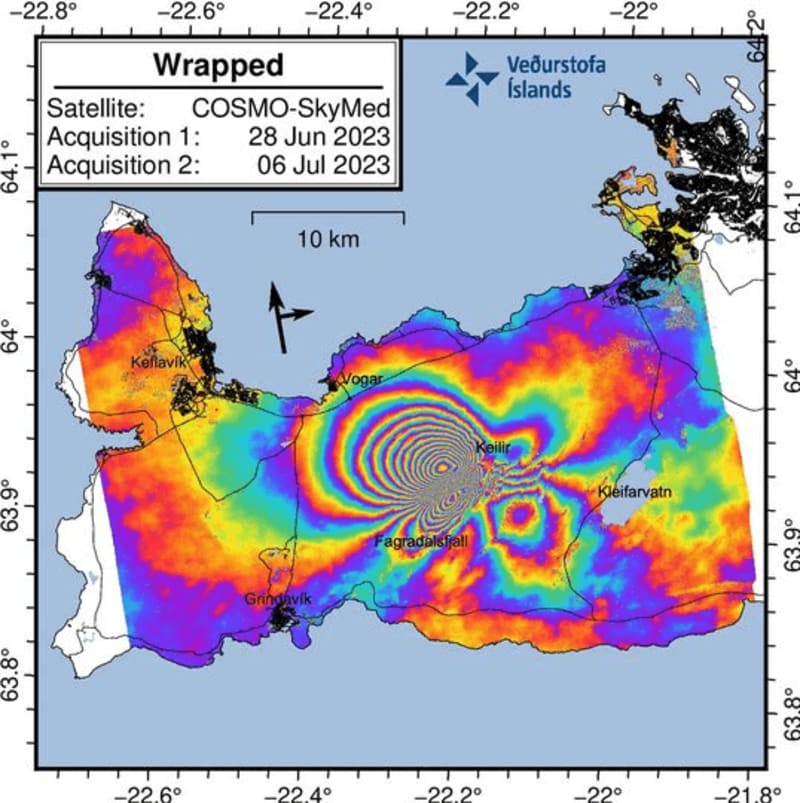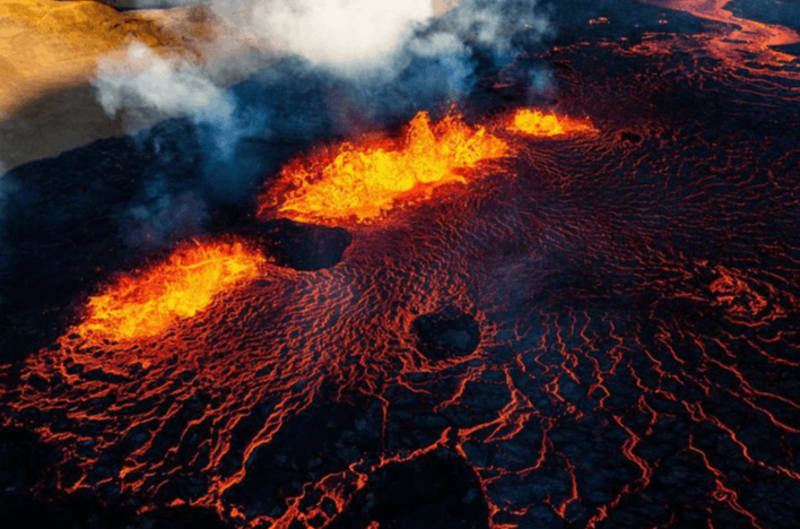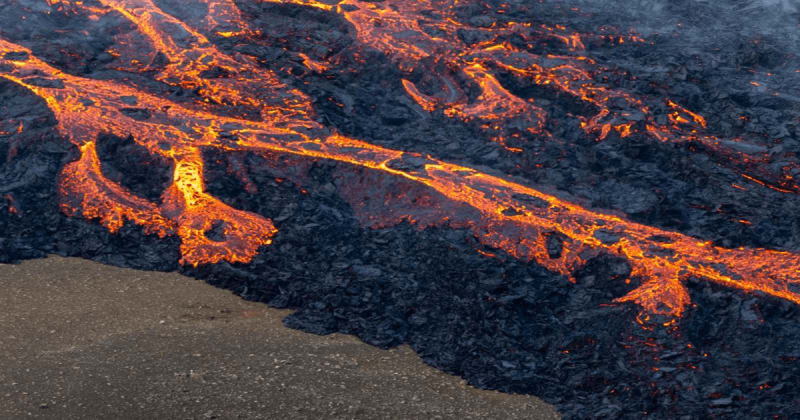Here at Northbound, we're all shaken up and it's not just from our morning tea! The last few days have been literally shaking things up here in the southwest of Iceland.
If you've sensed the ground quivering beneath your feet, it's not just due to our collective exhilaration over the superb weather we've been enjoying. It appears the earth itself is participating in a lively jig! We've indeed been experiencing a rise in seismic activity in the southwest of our stunning country over the past week or so. The most significant tremor of this season occurred on the 9th of July, a vivid reminder that we reside atop some of nature's most grandiose spectacles.
Yesterday, our subterranean giants, the volcanoes that shape our landscape, finally burst into action. The long-anticipated eruption began, underscoring that we're not merely spectators of this spectacle but active participants in the rhythms of the Earth.
In the geologically active Reykjanes peninsula, the air is thick with exhilaration and a slight tang of volcanic ash. This region is no stranger to nature's fiery theatrics, with the subterranean titans stirring for the third time in as many years.
Safety remains our paramount priority, and we commit to keeping you updated on the safest ways to witness these thrilling geological occurrences. So, for all you thrill-seekers out there, here's a rapid guide on how to stay safe during these geologically enthralling times:

Visiting Active Volcanic Sites
Wait for the official green light
The current conditions render the area exceptionally unpredictable. We urge you to patiently wait for official clearance from local authorities before you dare to venture close to the site. The fumes billowing from the freshly spilled lava are not just menacing but can be lethal. Local residents have been advised to keep their windows firmly shut and avoid strenuous outdoor activities. Picture this - if the situation is so serious at a distance, can you imagine the intensity right beside the flowing lava? Stay safe and remain alert.
Follow the marked trails
Adhering to the marked paths guarantees not just your safety but also protects the fragile environment. It also facilitates the Search and Rescue team's mission to locate you swiftly should the need arise. Moreover, the trail delineated by the authorities is selected not merely based on hiking difficulty, but with utmost attention to safety. The unpredictable terrain might crack open without warning, hence, following the marked paths is paramount for your safety.
Inform someone of your plans
By sharing your hiking itinerary, not only can you look forward to a warm meal at the end of a strenuous day, but it also serves as an essential safety measure. Informing someone of your plans allows authorities to be alerted promptly if you fail to return within the expected time frame, thus ensuring your wellbeing during your adventure.
Keep a safe distance
Ensure you maintain a substantial distance from unpredictable volcanic sites. Due to the geologically dynamic nature of these areas, the ground could potentially open up at any time, revealing new lava flows. Given the potential for toxic fumes and sudden geological changes, exercising heightened caution is crucial, particularly when traveling with young children, pets, or individuals with respiratory conditions. It's vital to respect the unpredictability of these sites and strictly adhere to established safety guidelines.
Dress for the occasion
Trading in your stylish sneakers for sturdy hiking boots is not just a fashion choice but a necessary safety measure when venturing out into rugged lava fields. The unforgiving terrain demands footwear that provides ample grip and ankle support. But it's not just about your feet - your entire outfit should be geared towards practicality and protection. Remember, when it comes to braving the elemental forces of nature, it's always safety and practicality over style.
Prepare for the weather
In Iceland, weather can change quickly, so ensure that your clothing layers can withstand the variable Icelandic weather, from unexpected showers to chilly winds. Dress in layers to accommodate sudden shifts - a moisture-wicking base, insulating middle, and waterproof, windproof outer layer are recommended. Don't forget a hat, gloves, and scarf, even in summer.
Pack essentials
Bring along a refillable water bottle, as sources for replenishment are scarce in the field. Don't forget to carry nutrient-rich snacks to sustain your energy. A fully charged phone is indispensable, not just for capturing breathtaking views but for emergencies as well. Lastly, remember to include a compact first aid kit in your backpack. If travelling late at night, we recommend a headlight.
Respect nature
Embrace the principle of responsible travel by ensuring that you leave no trace behind. Remain on the designated paths to preserve Iceland's untouched natural beauty and to minimize disturbance to local ecosystems. Make it your mission to return with all that you brought, including any waste or litter.
Remember, while the drama of earthquakes and volcanoes is irresistible, they can also be dangerous. Always prioritize safety, follow local guidelines, and avoid putting yourself or others at unnecessary risk.

Earthquake Preparedness
Stay calm
Panic only makes a situation worse. Stay collected and make rational decisions.
Duck and cover
Seek out sturdy furniture for shelter. Use your arms to protect your head and neck.
Stay indoors
The safety of a building is better than braving falling debris outside.
Avoid doorways
Doorways aren't the haven you might think. Better to find cover under robust furniture.
Stay away from glass
Shattering windows and mirrors can cause injuries.
If outside, find an open area
Stay clear of buildings, trees, streetlights, and utility wires.
After the earthquake, assess for hazards
Watch out for fallen items, electrical system damage, and water line damage.

FAQ
Is the Icelandic volcano about to erupt?
As of July 10th, 2023, the Icelandic volcano has already erupted. The initial phase was significantly more powerful compared to the eruption in 2022, but similar to last year, the power seems to be decreasing over time.
When did the last volcanic eruption occur in Iceland?
The most recent volcanic eruption prior to this took place in the Reykjanes peninsula in 2022. Remnants of the Fagradalsfjall eruption are still visible, though due to the high seismic activity currently being observed, we strongly advise against visiting the site at the moment.
Is it safe to travel to Iceland, despite the impending volcano eruption?
Iceland is a safe destination for travelers, even with the ongoing volcanic eruption. The country is well-prepared for such geological events, and comprehensive safety guidelines are available to all visitors.
Will the new eruption affect flights to and from Iceland?
The ongoing eruption may potentially impact flights to and from Iceland, particularly during the initial stages while scientists assess the potential for ash production. If there is no ash production, the probability of the eruption affecting flight schedules decreases, though it can't be completely ruled out.
What precautions should I take if I'm traveling in Iceland during the eruption?
If you're traveling in Iceland during the eruption, stay informed with the latest updates, strictly follow all official guidelines, avoid areas marked as restricted, and prioritize your safety above all else.
What is the best way to view the eruption safely?
To view the eruption safely, look out for designated viewing areas established by the authorities once the eruption begins. Helicopter tours, overseen by experienced tour operators, have been a popular way to observe past eruptions safely. It is essential to follow the guidance provided by authorities and tour operators at all times.


 English
English Deutsch
Deutsch Français
Français Español
Español Italiano
Italiano Dansk
Dansk Polski
Polski Português
Português 日本語
日本語 Svensk
Svensk Nederlands
Nederlands Norsk
Norsk 中文
中文 한국어
한국어